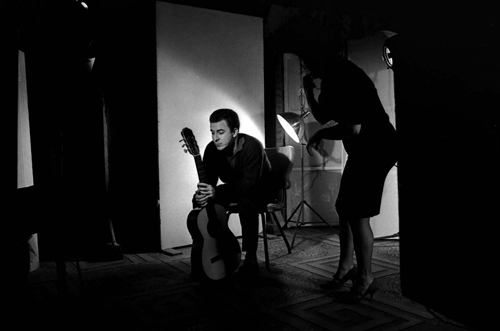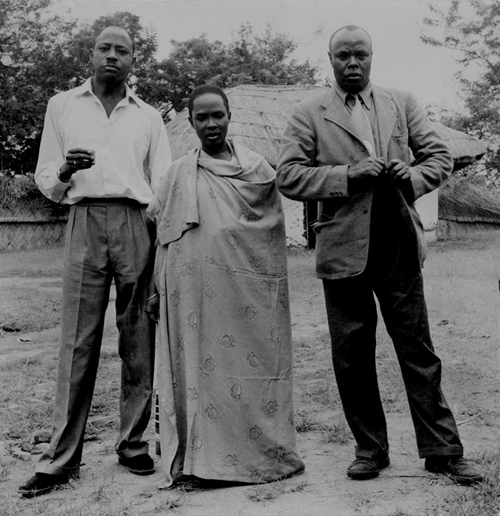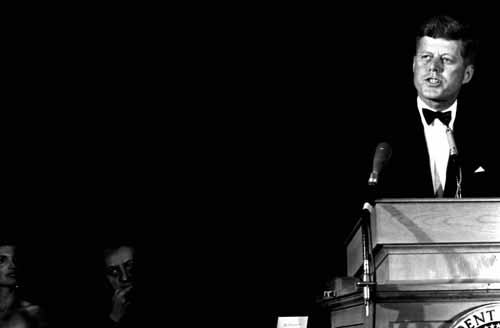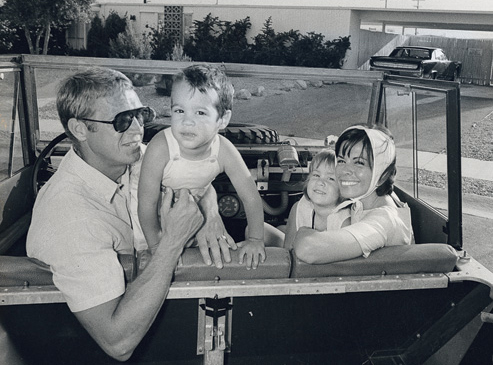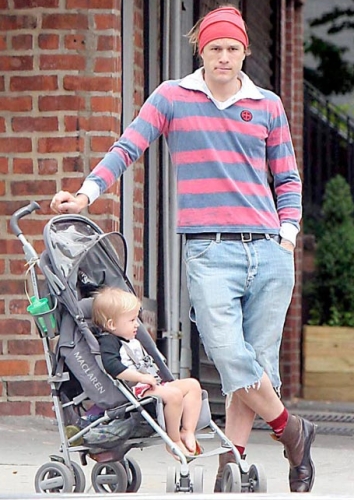
 Alfred Hitchcock and François Truffaut. Photo by Philippe Halsman, 1962
Alfred Hitchcock and François Truffaut. Photo by Philippe Halsman, 1962
“Two and a half years ago, my friend Claude Chabrol and I met Alfred Hitchcock when we both fell into an icy pond at the Studio Saint-Maurice under the gaze, at first mocking and then compassionate, of the master of anguish. Because we were soaked, it was several hours before we were able to seek him out again with a new tape recorder. The first one had literally drowned; it was ruined.
It was an extremely concise interview. We wanted to persuade Hitchcock that his recent American films were much better than his earlier English ones. It wasn’t very hard: “In London, certain journalists want me to say that everything that comes from America is bad. They are very anti-American in London; I don’t know why, but it’s a fact”. Hitchcock spoke to us about an ideal film one would be projected on one’s living-room wall the same way one might hang a beautiful painting. We “worked” on this film together.
“Would this ideal film be closer to I Confess or to The Lady Vanishes?”
“Oh, to I Confess!”
“I Confess?”
“Yes, by all means. For example, right now I’m thinking over an idea for a film that attracts me very much. Two years ago, a musician from the Stork Club in New York, returning home after work at about two in the morning, was accosted by two men at his door who dragged him to a number of different places, including several bars. In each place they asked, ‘Is this the man? Is this the man?’ he was then arrested for several robberies. Although he was completely innocent, he had to go through a trial, and by its end his end had lost her mind. She had to be institutionalized and is to this day. During the trial, one of the jurors, who was convinced of the defendant’s guilt, interrupted the defense lawyer as he was questioning one of the prosecution witnesses; the juror raised his hand and asked the judge, ‘Your honor, do we have to listen to all this?’ It was a small infringement of the ritual, but it caused a mistrial. As preparations were being made for a new trial, the real culprit was arrested and he confessed. I this would make an interesting movie, if we showed everything from the point of view of the innocent man, wha he has to go through, how his head is on the block for anothere’s man crimes.
All the while, everybody is being very friendly, very gentle with him. He insists, ‘I’m innocent’, and everybody answers, ‘Of course you are, sure you are’. Completely horrible. I think I’d like to make a film from this news item. It would be very interesting. You see, in this movie, the innocent man would be in prison all the time, and a reporter or a detective would work to get him out. They never make films from the view of the accused man. I would like to do that.”
A year ago, we learned from the American newspapers that Hitchcock was in the process of making a film called The Wrong Man. One didn’t have to be a mind reader to figure out that it was based on the event we’d discussed.
Hitchcock has never been more himself than in this film, which nevertheless runs the risk of disappointing lovers of suspense and of English humor. There is very little suspense in it and almost no humor, English or otherwise. The Wrong Man is Hitchcock’s most stripped-down film since Lifeboat; it is the roast without the gravy, the news event served up raw and, as Bresson would say, “without adornment”. Hitchcock is no fool. If The Wrong Man, his first black-and-white film since I Confess, is shot inexpensively in the street, subway, the places where the action really occurred, it’s because he knew he was making a difficult and relatively less commercial film than he usually does. When it was finished, Hitchcock was undoubtedly worried, for he renounced his usual cameo in the course of the film, and instead showed us his silhouette before the title appeared to warn us that what he was offering this time was something different, a drama based on fact.
There cannot fail to be comparisons made between The Wrong Man and Robert Bresson’s Un Condamné à mort s’est échappé (A Man Escaped). It would be foolish to assume that this would work to the detriment of Hitchcock’s film, which is sufficiently impressive right from the start not to have to beg for pride of place. The comparison is no less fascinating when pushed to its utmost, to where the divergences between the two movies cast a mutual light on each other.”
François Truffaut
Written circa 1955









